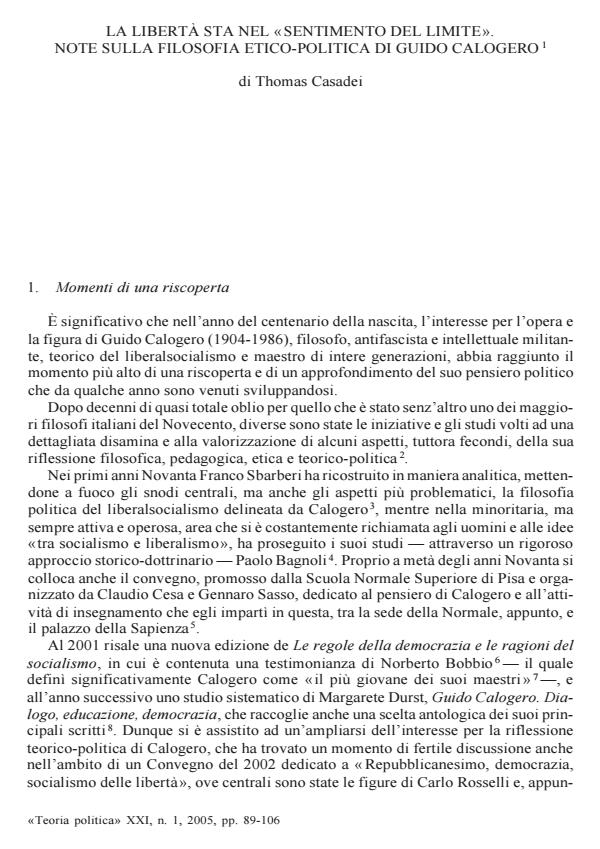La libertà sta nel sentimento del limite. Note sulla filosofia etico-politica di Guido Calogero
Journal title TEORIA POLITICA
Author/s Thomas Casadei
Publishing Year 2005 Issue 2005/1
Language Italian Pages 18 P. File size 67 KB
DOI
DOI is like a bar code for intellectual property: to have more infomation
click here
Below, you can see the article first page
If you want to buy this article in PDF format, you can do it, following the instructions to buy download credits

FrancoAngeli is member of Publishers International Linking Association, Inc (PILA), a not-for-profit association which run the CrossRef service enabling links to and from online scholarly content.
In the year of the centenary of the birth, Guido Calogero’s work and life (1904-1986) who was philosopher, antifascist, engaged intellectual, liberal-socialist theorist, teacher for a whole generation reach now their highest clebrity, since his political thought has been rediscovered and deepened in the last years. There have been celebrations and studies, concerned with aspects of his philosophical, pedagogical, ethical and political thinking. Starting from the new edition of La scuola dell’uomo, this essay sets forth some considerations on three closely intertwined issues, the idea of liberty, the connection between education and democracy, the ethical vision and the relationship between the individual and the otherness. From the text, the «feeling of boundary» emerges with its theoretical and practical importance. This could be read as an original interpretative key for the praxis of democracy and to sketch Calogero’s ethical and political theory. His ethical and political lecture gives instuments to face delicate issues of today’s life as well, as it is demonstrated by a complex vision of liberty, an ethic conceived as very close to the ethic of care (such as that elaborated by the theoretical feminism of the last years), the connection between civil education and the assets of a pluralistic democracy.
Thomas Casadei, La libertà sta nel sentimento del limite. Note sulla filosofia etico-politica di Guido Calogero in "TEORIA POLITICA" 1/2005, pp , DOI: